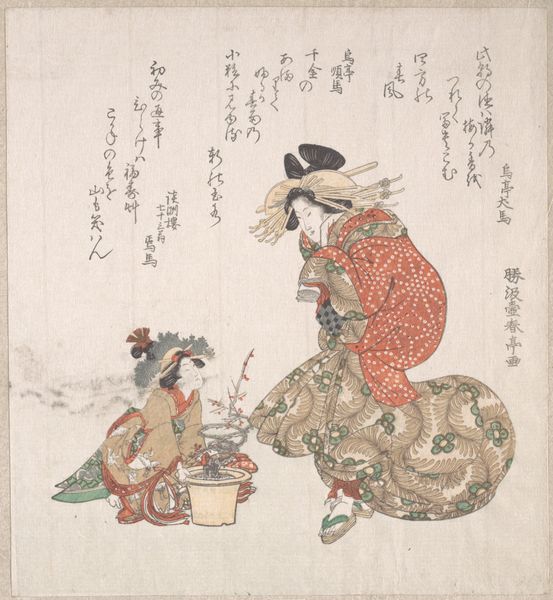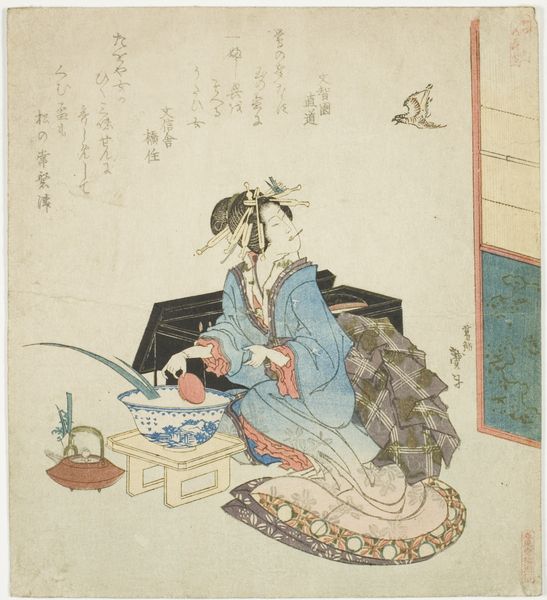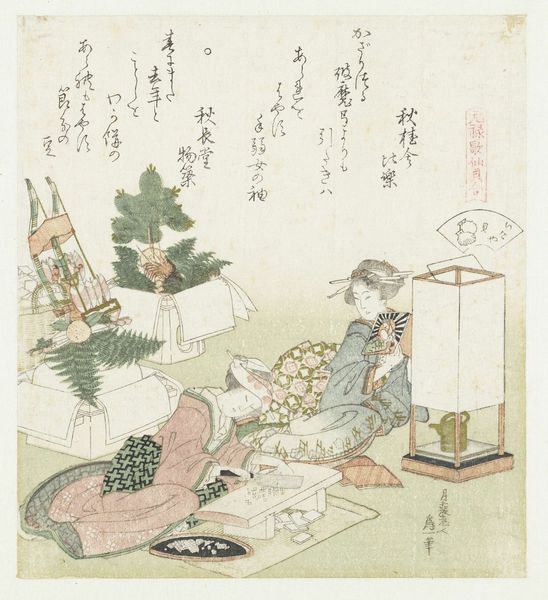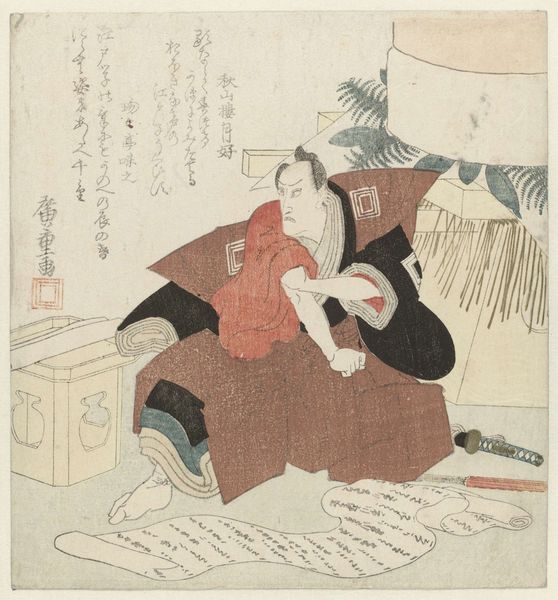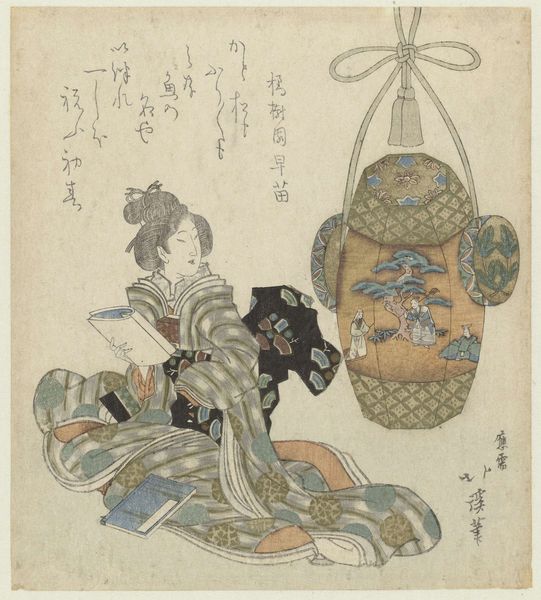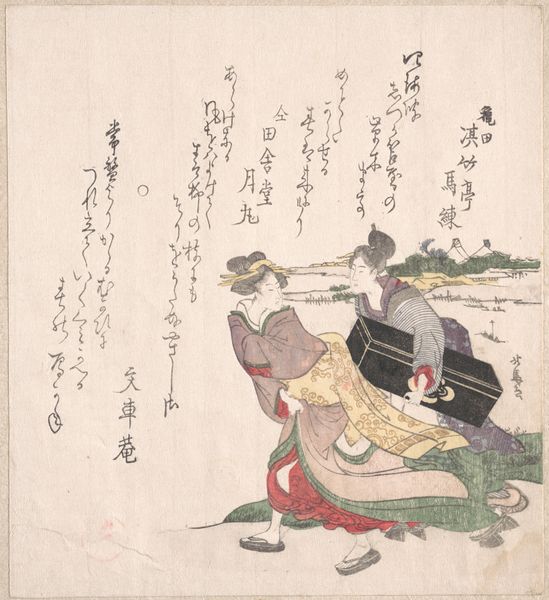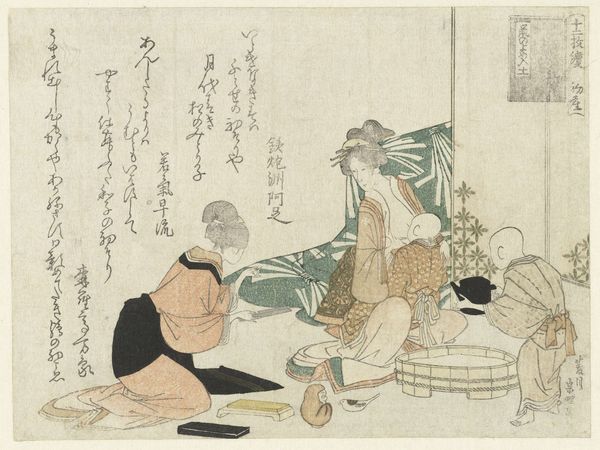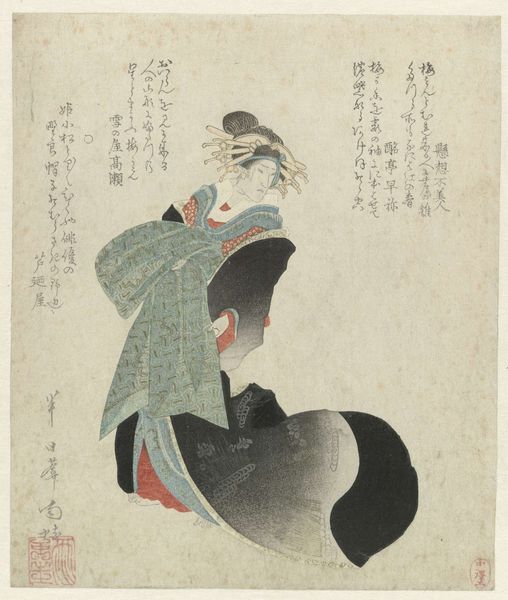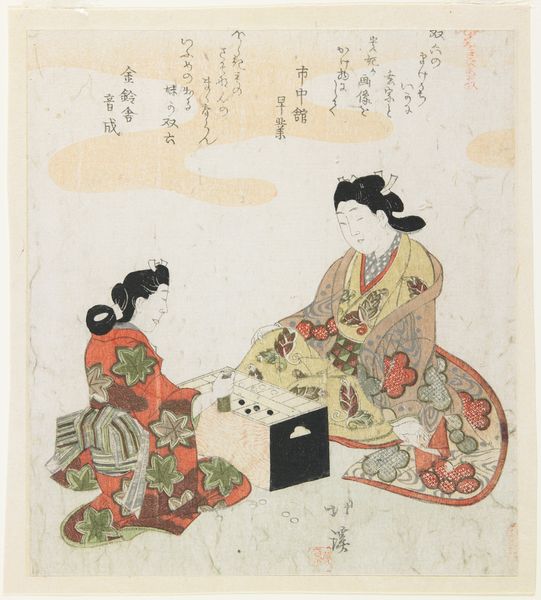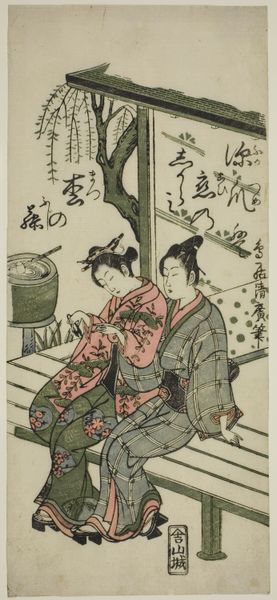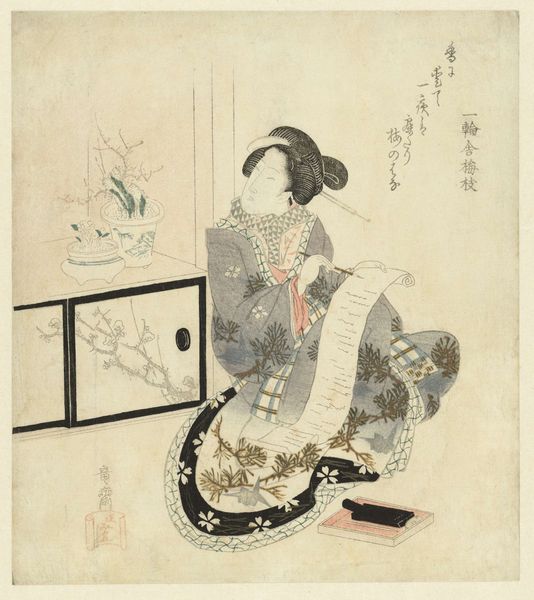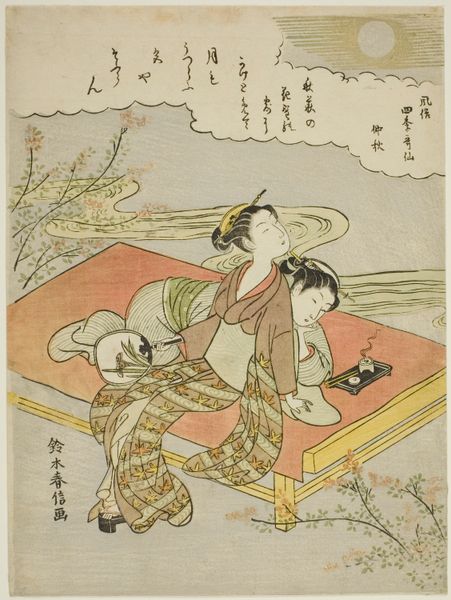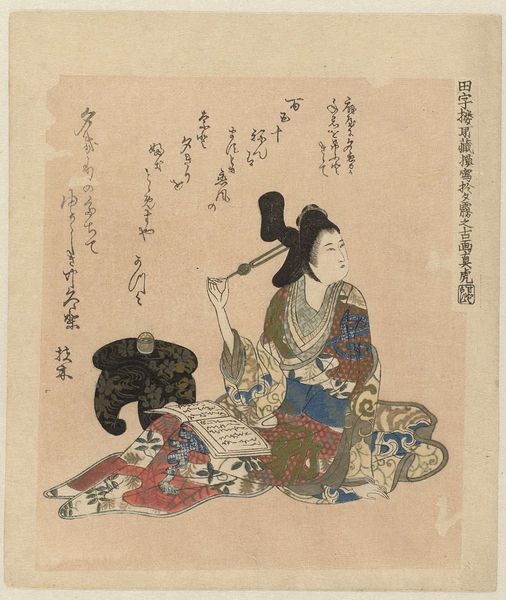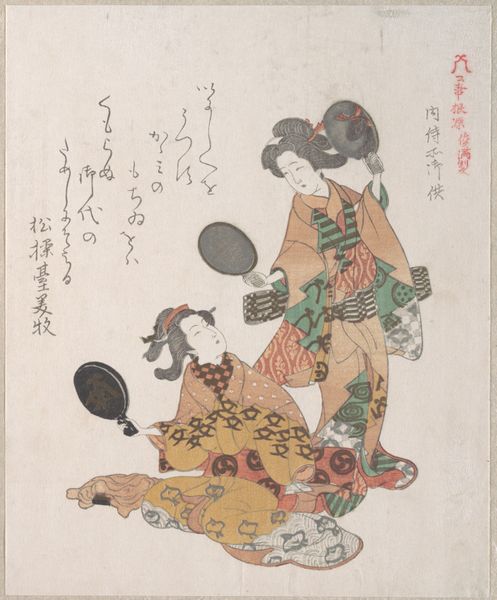
print, woodblock-print
#
portrait
# print
#
asian-art
#
ukiyo-e
#
woodblock-print
#
genre-painting
Dimensions: height 198 mm, width 183 mm
Copyright: Rijks Museum: Open Domain
Curator: Here we have "Woman Preparing Greens in a Mortar," a woodblock print by Utagawa Sadafusa, dating from about 1825 to 1830. Editor: It’s got a lovely intimate feel, almost like catching a glimpse of someone in a private moment. I'm struck by the limited color palette; it focuses your attention. And all the subtle text; it makes me wonder what they're saying, or perhaps not saying at all... Curator: Indeed. Sadafusa worked primarily in the ukiyo-e tradition, which translates to "pictures of the floating world." These prints were very much aimed at a burgeoning urban class. We see a rise in depicting everyday life, not just idealized or historical scenes. Editor: It makes me wonder what was so appealing. What "floated" about the "floating world." She almost appears pained; the grind must be arduous labor. I wonder if she is stuck in an endless loop preparing ingredients that might become something marvelous—if one can only imagine. Or perhaps just vegetables. Curator: Right. The "floating world" concept refers to an embrace of sensual pleasures and the transient nature of life. However, it's essential to remember that this romantic view often obscured social realities and hierarchies. These prints, while depicting everyday scenes, were part of a complex commercial system with its own restrictions. The artist needed to conform to prevailing tastes. Editor: I feel as though there might be a certain degree of self-aware melancholy here. It's a reflection, not a straightforward portrait. The face, the tilt of her head—and those lovely decorative details; are they merely decorations, or some secret message for all the maids who, perhaps, have crushed vegetables with their mortar in hope? Or does our view, itself, contribute to the melancholy? It might only take some extra pepper or onion for an incredible transformation... Curator: Certainly. These prints operated within very prescribed boundaries concerning the permitted topics and social commentary they might contain. The work participates in—and also slightly tweaks—the culture around it. But I suppose all art, in a way, does the same. Editor: Well said, I’m going to head home and try something new with the radishes in my fridge. See if I can transform them—and myself!—just a bit. Curator: I might start digging around in the library—see if I can locate a bill or letter for this print! Thanks!
Comments
No comments
Be the first to comment and join the conversation on the ultimate creative platform.
